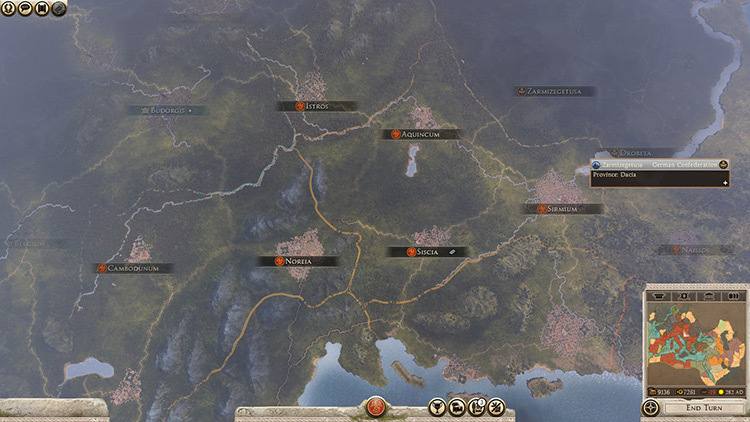

Lakhmids 2nd free DLC faction, released on 15 September, 2015 along with the Empires of Sand culture pack.Suebians 1st free DLC faction, released on 25th June, 2015 along with The Last Roman campaign pack.Without any paid DLC, there are fourteen playable factions in Total War: Attila Grand Campaign. There are ten playable factions on Grand Campaign without any DLC (at release) and twenty nine with all DLCs.Īs for Campaign packs, there are thirteen playable factions in total. The style has been reworked and has becoming simpler to use and have more options over Rome II's. Last but not least, the UI has gone through some major changes by the Creative Assembly. Defenders have the ability to erect some temporary barricades that close off some roads to buy time or defend. Watch towers can now be found in any settlement type. There are a few more bonuses for each side of siege battles in Attila that weren't in other Total War games. It doesn't just effect a city's public order, but it also effects diplomatic relations between factions, just like cultural differences do.īattles are mostly open field and siege battles, with very few naval battles. In doing so, he will gain some experience from running the city, which will give him some levels and skill points that improve his abilities.Īpart from cultural differences, religions and religious buildings play a big role in the game. That governor, chosen by the player from your family or an opposing one that will rule your province by himself. One of the differences Attila has from Rome II is the use of edicts on any region, however there must be a Governor of that province to issue them. So you might expect some political intrigue against yourself too! There are many options for player to attempt, but AI is also capable of using these same abilities. Now you can manage them both in more detail than before. This comes with a price however, because if you lose the army, then you lose the horde and all its development.Īttila has an improved, reworked version of Family tree and Politics too. A horde is a combination of a large army and a mobile city. In the details of the campaign mechanics, we now have an improved and reworked version of the Horde mechanics from Rome: Total War: Barbarian Invasion.

However this doesn't mean you have to be defensive all the time. You can see that throughout the game, even in the victory conditions. Unlike other Total War games, Total War: Attila is mostly based on surviving. Although not identical, the two are largely similar. The game engine is the improved and reworked version of the Rome II's.

It stretches from Morocco to Caspian sea, and from Hibernia to Arabian peninsula. The campaign map in Attila is very similar to the one in Total War: Rome II. Religion is of increased importance as factions attempt to move across the campaign map, players may need to concentrate on converting populations to their religion to avoid unrest before moving on.Īttila also introduces the ability for players to raze settlements once they have been conquered, this allows the player to enact a "Scorched Earth policy" which destroys the land around the settlement and hence the enemy's food and money supply. The Huns as a faction will be familiar to any players of Rome: Total War: Barbarian Invasion, Attila also includes an improved and reworked version of the horde mechanics from that game. Attila is not yet in power at the start of the game, but will later be able to become the leader of the Huns. Total War: Attila is set in the late Roman period starting in 395 AD, during the period now called Late Antiquity. 2.5.6 The Age Of Charlemagne Campaign Pack.


 0 kommentar(er)
0 kommentar(er)
